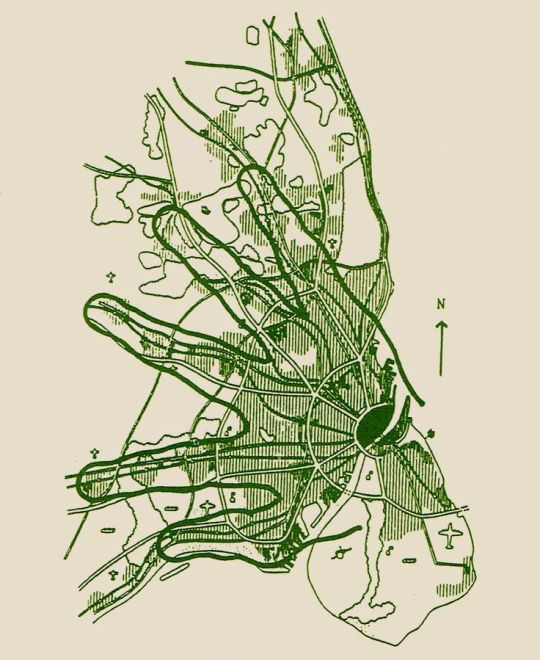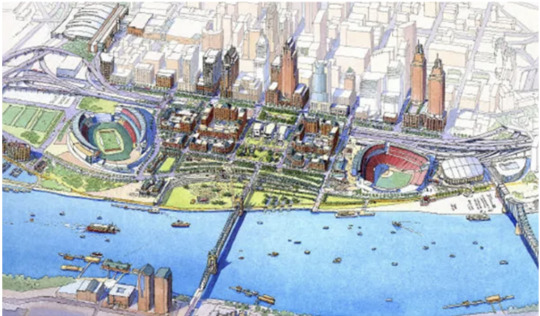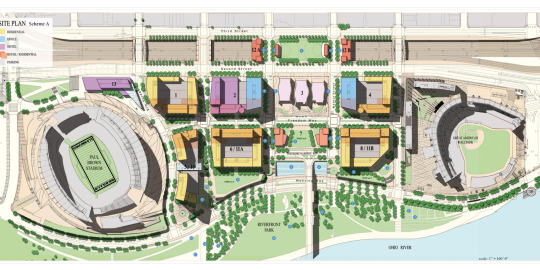#University of Cincinnati
Explore tagged Tumblr posts
Text

#Joe burrow#Joey b#cincinnati bengals#bengals#cincinnati football#cincinnati ohio#cincinnati reds#cincinnati zoo#wkrp in cincinnati#university of cincinnati#fc cincinnati#blink cincinnati#cincinnati cyclones#jamarr chase#nfl football#2024 nfl season#Fremont California#Washington#knoxville#knoxville tennessee
31 notes
·
View notes
Text

There he is🥹🫶🏻
Go Bearcats!❤️🖤
67 notes
·
View notes
Text
Women’s Bobbed Hair Got Cincinnati Men’s Dander Up One Hundred Years Ago
One hundred years ago, most men in Cincinnati believed women had got all the doggone progress they deserved. Women could vote, they were driving cars, they smoked cigarettes, and some women – gasp! – had jobs. In 1924, Cincinnati women discovered a new way to exasperate men. They had the nerve to cut their hair.
For many men, it was a sign of the end times. The Enquirer [2 April 1924] reported on a man who shot himself after a “three-hour tirade against all women” because his wife had her hair bobbed. The Post [29 March 1924] carried a story about an 18-year-old girl who bought rat poison in a suicide attempt because of the abuse heaped on her by her parents when she got a haircut. A single woman told the Post [25 April 1924] that she was glad to be unmarried with her bobbed hair.
“Consider what suffering I might undergo for my bobbed hair if I were married. My husband might kill himself on my account, so that I would be obliged to wear black for a year. I look dreadful in black. Of course, if a woman looks good in black, it is not so bad if her husband kills himself because of her bobbed hair.”
Some men avoided suicide and charged into divorce court. Robert M. Hannah of Spring Grove Avenue told the judge, according to the Enquirer [3 May 1924], that his wife abused and neglected him, but the haircut was the last straw:
“He said he was much opposed to bobbed hair, and to torment him she had her hair bobbed, then brought the tresses home to him, wrapped up, telling him it was a present. Then they separated.”
The local courts saw women making decisions about their own tresses as infringing on the property rights of their husbands. Judge William D. Alexander, according to the Post [18 March 1924], believed that husbands who treasured their wives ought to have a say about their appearance. He dismissed a case brought against John Brown of Clifton Avenue, who struck his wife when she got a bobbed haircut without permission. The judge said:
“If my wife wanted to have bobbed hair, she would at least consult me; that’s a wife’s duty and a matter of courtesy toward her husband.”
Typically, Cincinnati was inclined to blame any new fad for the downfall of civilization, and the local newspapers obliged by delightedly printing reports of “bobbed-hair bandits” who perpetrated robberies around town. There was one such gun moll operating in the West End who carried a “wicked revolver” and waylaid men wandering the neighborhood at night. The Enquirer [3 March 1924] was delighted because New York and Chicago had endured the predations of “bobbed-hair bandits” and our town felt left out:
“Cincinnati achieved a ‘bobbed-hair bandit’ last night and graduated to the ranks of a cosmopolitan city.”

Another bobbed-hair bandit operated over several months with a male accomplice. The Post [4 April 1924] reported she was the brains behind the operation when a gas station on Central Avenue got robbed:
“The blonde female bandit, with bobbed hair, who has been sought by police for two months, during which time she has been active, put in an appearance again Thursday night.”
Perhaps it was the unsavory connotations of bobbed hair in regard to banditry or suicides or divorce but the biggest kerfuffle caused by shorn locks in 1924 involved the University of Cincinnati College of Nursing. The dean of the college, Laura Logan, penalized eight students who dared to cut their hair by requiring them to endure another three months of instruction (presumably time to allow their tresses to grow out again). Dean Logan told the Enquirer [10 April 1924]:
“‘It was necessary to make a ruling on this because of the necessity of deciding what goes with a nurse’s uniform and what does not,’ Miss Logan said. ‘It was decided that bobbed hair detracts from the dignity of the uniform. Since uniformity was essential, this was the only way in which it could be maintained.’”
For the record, here are the young women whose rebellious fashion sense earned them double-secret probation from the nursing college: Mildred Carson, Grace Funk, Virginia Jordan, Mary Randolph, Virgina Shoot, Isabel Baer, Doris Kreimer and Mary Macey.
The newspapers reported that the nursing schools at Christ Hospital and Good Samaritan Hospital had enforced similar rules. At Deaconess Hospital the Post [11 April 1924] found the superintendent somewhat conflicted:
“‘We have more important things to worry about than bobbed hair,’ Rev. A.G. Lohmann, superintendent of Deaconess Hospital, said. Rev. Lohmann said he did not particularly blame any woman for bobbing her hair. ‘It certainly is more sanitary,’ he said. The superintendent, however, gave it as his opinion that bobbed hair was not attractive. He is discouraging bobbed hair at his institution by requiring new students in the School of Nursing to wear hair nets.”
One economic sector very much in favor of bobbed hair was the tonsorial trade. Hair stylists in 1924 could arrange and braid hair but knew nothing about cutting it. Barbers, on the other hand, now found themselves in demand by a very different, feminine, clientele. Business boomed, according to the Post [30 Aprl 1924]:
“Of 85 beauty parlors here, 19 have opened since Jan. 1. The demand for attention by bobbed heads is so great that many establishments are being opened in the suburbs. Just like husband and father, wife and daughter now have their favorite barber, whom they visit regularly to have the clippers run up their necks.”
And that may explain the real reason so many men objected to the new hairstyles – they cost more. Hugh McKay complained to the Post [1 October 1924] that his wife’s haircut cost four dollars compared to his 40-cent trim, once special treatments like water-waves and marcelles were applied. And, once her hair was clipped, her hats no longer fit and she needed new millinery.

28 notes
·
View notes
Text
May 15, 2025, University of Cincinnati SJP promoting some something about “NATO expansionism-”

7 notes
·
View notes
Text
Alright. So Denise is from ohio right? She mentioned it when she asked Daryl to get pop for Tara. I’m trying to narrow down where she got her degrees (both undergrad and medical school). I have an idea of what I might want to make it, but let’s see what everyone has to say
#throws this into the abyss#the second library of Alexandria#daryl posting#the walking dead#twd Denise#Ohio#ohio university#osu#ohio state#Miami university#case western#university of cincinnati#university of Dayton#the walking dead fanfiction
11 notes
·
View notes
Text




University of Cincinnati Air Care N145WC taking off from Miami valley Hospital
taken 6/21/24
#aircraft#aviation#helicopter#ohio#hems#air ambulance#airbus#daytonohio#h145#university of cincinnati#university cincinnati aircare#aircare#uc aircare#photography#aviation photography
15 notes
·
View notes
Text
protests at University of Cincinnati
4 notes
·
View notes
Text
Garden Cities
Our group believes that the garden city is the most versatile, applicable, and beautiful theoretical concept. Garden cities, especially if combined with city beautiful concepts, can provide valuable outdoor space, fresh air, and light to compacted city dwellers.

We see three major conceptual scales of garden cities, with the largest being the most difficult to construct, and the smallest being the easiest. We call this achievability. In this post we will look at achievability, along with usability, modularity, efficiency, and sustainability.
Achievability
Large Scale Garden Cities
Large Scale Garden Cities, like Garden Cities of To-morrow by urban planner Ebenezer Howard, is a large scale plan, to develop a vast region into a collective city. While visionary in its approach, and understanding of human desire, it lacks achievability due to it's vast scale. The only way a plan such as this could be implemented would be in consequence of mass destruction. These type plans can use their large scale to create great efficiencies, such as population centralization or grouping like land uses.

Medium Scale Garden Cities
Most frequently implemented, medium scale garden cities typically interpret the idea of open space as preserving areas as parks or using them for farmland. These take the form of greenbelts or green-fingers. This is contrasted to the unplanned open space form affectionately named 'spots'. A few quintessential examples, as well as a few local examples are listed below in their respective categories.
Green Belt
The green belt, pioneered by the British for London, was the answer to maintaining access to the countryside for the metropolis. London's greenbelt was inspired by Howard's original plans for garden cities. While very effective, few modern cities have greenbelts, especially in America. Portland, Oregon is notable for having a greenbelt, made possible by legendary environmentalist Tom McCall.
London

Portland

Green Fingers
The green fingers approach solves the early 20th century's problem with city dwellers access to light, air, and the countryside. It often takes shape as parklands in between developed areas. Helsinki, Finland pioneered this idea in the mid 20th century, and it has since spread to other cities in the world. In some places, like in Louisville, Kentucky, it was seeded with an Olmsted master plan in the 20th century, and has been mostly maintained in growth patterns.

Helsinki


Louisville

'Spots' (not a garden city concept) (for comparison)
Take note of the large swathes of land where it would take hours to get to any place that could be considered 'undeveloped'.
New York

Small Scale Garden Cities
The idea of small scale garden cities has yet to be realized in real life. Best implemented in rural areas, near to a city, these would take shape of a co-operative high-rise, multi-purpose building, surrounded by a co-operative farm. With a food source this close to a population center, it allows residents to be far more intimate with their food supply. This would be adjacent to a mainline railway station, with relatively frequent trains to the city. This would also be an effective tool against unruly growth in small towns, as a method of efficient, planned consolidated growth, where the density is great enough, to have an acceptable cost to service. Fenley's personal favorite example of this is Solving the Housing Problem by Hugo Gernsback, a magazine editor, and the inventor of modern day science-fiction.

Image restored by Fenley Jones
Usability
A garden city could easily be more usable than a city with a traditional development pattern. There are several ways this is achieved. Centralizing density, there becomes a far more likely chance that the place you want or need to go is close to the place you are coming from. With transit is planned in from the beginning, connecting to these population centers, making it easy to travel further if necessary. Additionally, will more people in a smaller area, it becomes a challenge for a person to put themselves into social isolation as many inadvertently do in modern cities. Lastly, mass employers are accessible nearby, making it easier for all people to find employment, no matter their skill level.
More still, with gardens surrounding the city center, social environments are within easy access, along with leisure and pleasure areas.

Modularity
If realized at the greatest scale, in form of city-nodes, modularity can be achieved. In a network of numerous nodes of different types, resiliency is created. This could lessen logistical burdens, simplify access routes, and provide for an efficient network. For example, if a city-node along the coast is subject to some natural disaster, the other city-nodes can absorb some of the impact from this city.

Efficiency
Separating the various uses of the city diligently, as proposed in the concept by Ebenezer Howard, could potentially create great efficiencies. Such categorization could potentially take advantage of economies of scale, minimize distance goods and services travel, and simplify understanding of an area by it's citizens.
Sustainability
Lastly, garden cities, and cities that implement garden city concepts can be very sustainable.
By concentrating the population, it put more people and services within closer reach of other people and services, and when these people need to access further away people and services, it is efficient to transport them there.

By centralizing housing and planning, it allows for blocks of modular, easy to manufacture housing. Known in western vernacular as Commie Blocks, as the USSR made extensive use of modular, easy to manufacture housing to quickly and cheaply improve the living conditions of its people.
youtube
By developing more on less land, the land is free to be left undeveloped, or landscaped for the benefit of the citizens. For example, in the plan by Ebenezer Howard, only 1000 out of 6000 acres are used for development therefore leaving 5000 acres free for animal habitat, recreational space, and natural areas.
By zoning special areas far away from the population center, it can reduce pollution for the residents. Additionally, the Large number of trees and vegetation, can assist in removing pollutants and absorbing noise pollution too.
With such prominent and abundant vegetation, any person is close to nature at all times, while still being able to access the amenities of a city.

With centralized population and business centers, public transportation is available to the citizens, and service is as efficient as possible.
Sustainability in the sense of long-term vitality is not forgotten either. In concepts with co-operative ownership, rent and revenue would pay for government services, and lead the city to long term financial stability.
In summary, sustainability in a garden city is just one aspect achieved by concentrating development, preserving natural spaces, reducing pollution, and planning public transport into daily life. Their design integrates long-term environmental, social, and economic resilience, as a model for urban growth.
Written by Wade Hayden, Matthew Sayers, Logan Kiser, Myles Edlund, and Fenley Jones
Edited by Fenley Jones
#garden cities#twentieth century planning#retrofuturism#urban planning#land use#agriculture#university of cincinnati#daap#Youtube
2 notes
·
View notes
Text









19 notes
·
View notes
Text






University of Cincinnati Air Care 1 N145UC at its base in Walton, Kentucky
Taken /4/19/24
#aircraft#aviation#kentucky#helicopter#hems#airbus#air ambulance#eurocopter#university of cincinnati#h145#airbus helicopters#photography#aviation photography
13 notes
·
View notes
Text
City Beautiful: Lessons Learned from Paris and Chicago
Located alongside the Ohio River, The Banks is the oldest neighborhood found in downtown Cincinnati. Originally the epicenter of freight rail for the western portion of the United States, The Banks have always been central to Cincinnati's identity and image. Only recently has it been renovated due to the Ohio River flooding in 1997. After this tragedy that left all buildings in The Banks unusable, the movement to completely refresh this area of Cincinnati was finally put to work.

Pictured above is the original draft for The Banks presented in 1997. If you are familiar with The Banks you will notice that the original draft presented is almost identical to how we see this area today. Most of the reasons why is due to its clear inspiration from the City Beautiful movement, found in Chicago and Paris most notably.
Railways and Roadways: Cincinnati’s railways and train stations are not present in the downtown Cincinnati Banks area. Originally the Cincinnati Union terminal, built in 1933, held traffic over World War II and saw a decline over the next decades. This decline caused the train concourse to be demolished in 1974 and was then reoperating in 1991 as the Cincinnati Museum we know and love today. Union Terminal’s purpose was to bring together the railways to decrease congestion in the city and the poor conditions the tracks were kept in prior to the construction of the Union Terminal. Today the benefits of a train concourse would bring connectivity to other cities allowing more visitors to move smoothly through the area and bringing in more social and economic connections.


As seen above, Cincinnati houses the Great American Ballpark for the Reds and Paycor stadium for the Bengals, introducing visitors from states all over the US. With this incoming traffic, railways and train stations would be more effective in reducing congestion on highways and roadways. Cincinnati has a higher car dependency than other cities due to limited transportation options, with the increase in public transportation in the Banks, less congestion, aging of the roadways, and maintenance problems would occur. Ways Cincinnati can emulate Haussmann’s designs is to designate walkable areas and travel areas. This would enhance the city's community as well as the city's public spaces. Haussmann’s boulevard design in Paris can be emulated in Cincinnati today with the development of pedestrian-friendly spaces and more road width to reduce the backed-up traffic. Hausmann’s boulevard design improved traffic flow as well as pedestrian flow which Cincinnati is currently lacking. Cincinnati is also known for hosting various festivals and events. These events are usually hosted on roadways which harms the traffic downtown. Grant Park Chicago, which echos Haussmann’s advances made in Paris’ green spaces, hosts similar events that can be replicated on the Banks with their green spaces. With more public green spaces and areas these events could be moved to, it would be more efficient on the traffic as well a more efficient use of space for pedestrians.
One of the many changes made to Paris and Chicago during the City Beautiful movement was to improve sanitation in the city by destroying infected alleyways and centers for epidemics. While currently, The Banks does not have any infected parts of its streets, the Ohio River is not the clean blue river that it once was. Many complaints for other states that the Ohio River runs through have been filed most notably by the state of Kentucky. Kentucky filed a complaint against DuPont, a company responsible for creating a broad array of industrial chemicals, for the mass amount of chemicals that can be found in the river. The most notable of which is the pre-and poly-fluoroalkyl substances or PFAS, which are known as forever chemicals. It goes without saying that having these chemicals run through the heart of Cincinnati is absolutely not sanitary which does violate one of the four guiding principles of the City Beautiful movement.
Debate Question:
Which aspect of the City Beautiful movement should Cincinnati work towards implementing first?
3 notes
·
View notes
Text



3 notes
·
View notes
Text


So, uh, I graduated from college or whatever
#college#university#university of cincinnati#it hasn’t hit me yet#give it like a day and a half#but yeah#I guess I’m a microbiologist now???#I suppose???
1 note
·
View note
Text
Vauban Eco Neighborhood and Schwartz’s Point BRT Station Final Presentation (part 2)











Last post of the blog. Thanks for a nice semester Hyesun!
#urban planning#landscape architecture#over-the-rhine#cincinnati#daap#university of cincinnati#school project#final project#presentation
0 notes
















